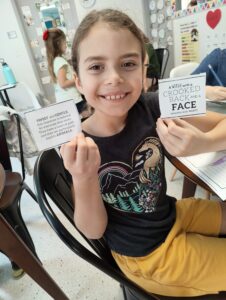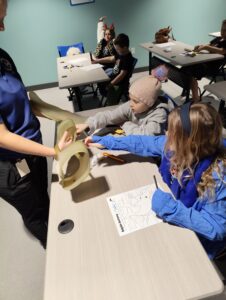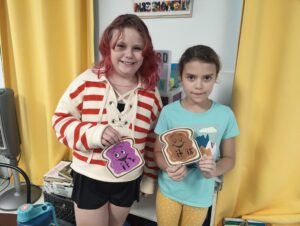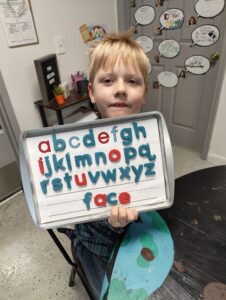Exploring the benefits of hands-on learning is like unlocking a door to a world where education becomes an immersive and dynamic experience. At Indi-ED, we believe in the transformative power of hands-on learning, having seen first-hand how it enriches education, engages students, and paves the way for a holistic understanding of the world around us.
Hands-on activities capture students’ attention and interest, fostering a more engaged and participatory learning environment. The interactive nature of these experiences encourages students to actively explore and understand concepts. In Mrs. Donnelly’s reading class, students were able to analyze an author’s setting descriptions to create an illustration of the setting themselves. This helped students be able to put themselves into the story and visualize, which aids in full comprehension of the story. Analyzing a character’s feelings and thoughts is so much more attainable when you are acting out the scenes yourself with reader’s theater activities.

Not only will students of all ages enjoy their lessons, they are much more likely to remember what they’ve learned. Engaging multiple senses through hands-on activities contributes to better retention of information. The tactile and kinesthetic aspects of hands-on learning help solidify concepts in students’ minds, leading to improved long-term memory. Instead of dull grammar worksheets, students are given the opportunity to move around the classroom as they complete “scavenger hunt” questions.
Hands-on learning provides students with opportunities to apply theoretical knowledge to real-world situations. This practical application enhances their understanding and prepares them for challenges beyond the classroom. Through hands-on activities, students often encounter problems that require critical thinking and problem-solving skills. This approach cultivates a mindset of inquiry and curiosity, fostering the development of essential cognitive abilities.
 Many hands-on activities involve collaboration among students. This collaborative learning promotes teamwork, communication, and the exchange of ideas, preparing students for future collaborative endeavors in their personal and professional lives. When learning about contractions, our youngest cohort had a blast moving around the classroom looking for the student who had their “contraction match”.
Many hands-on activities involve collaboration among students. This collaborative learning promotes teamwork, communication, and the exchange of ideas, preparing students for future collaborative endeavors in their personal and professional lives. When learning about contractions, our youngest cohort had a blast moving around the classroom looking for the student who had their “contraction match”.

Ultimately, we at Indi-ED know that all students have diverse learning styles, and hands-on learning caters to various modalities. Visual, auditory, and kinesthetic learners can all benefit from interactive experiences, ensuring a more inclusive educational environment.

Hands-on learning sparks curiosity and motivation, making the educational experience enjoyable. This intrinsic motivation can lead to a positive attitude toward learning and a lifelong love of acquiring knowledge.


